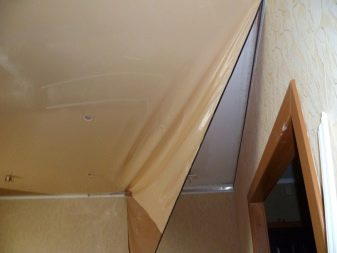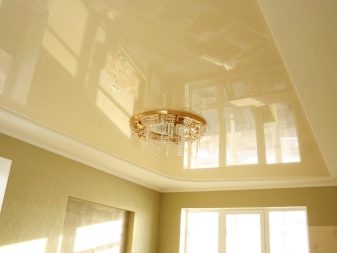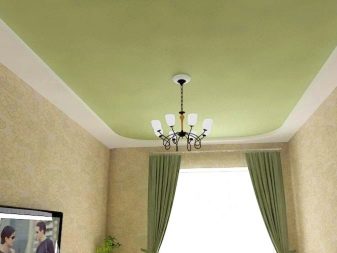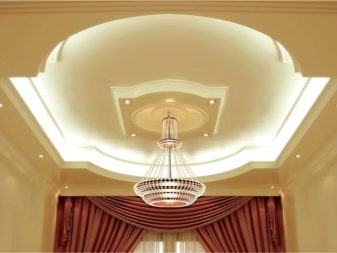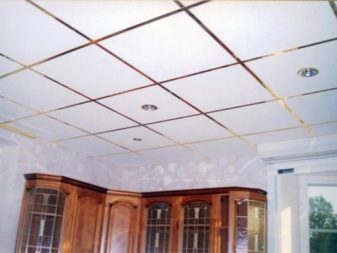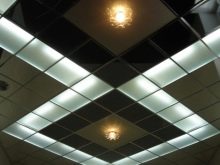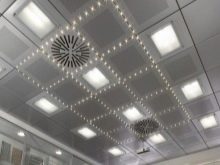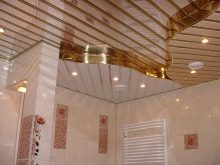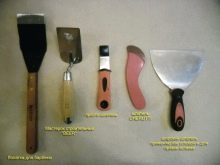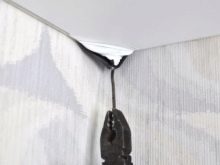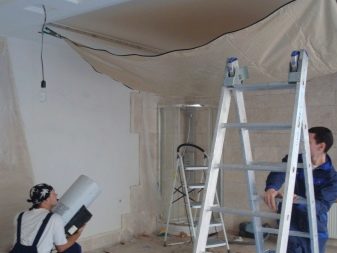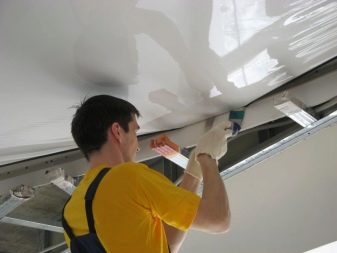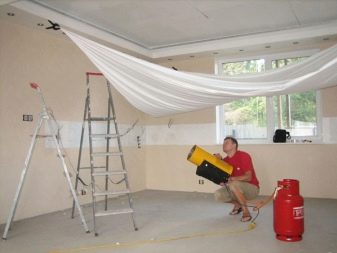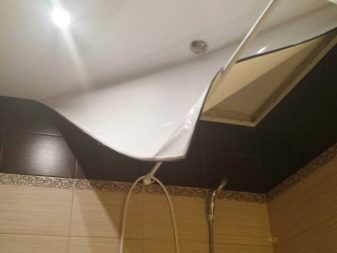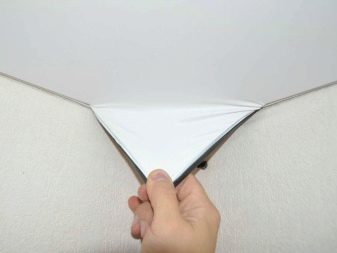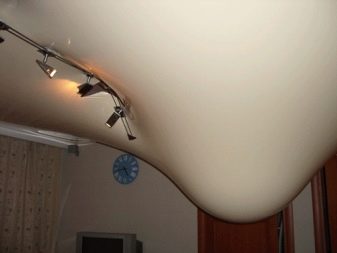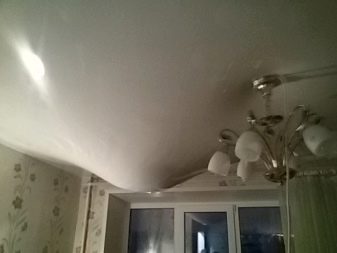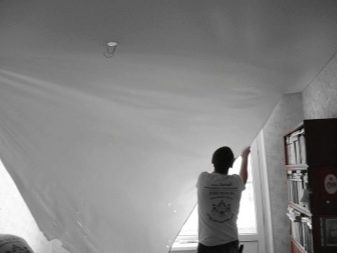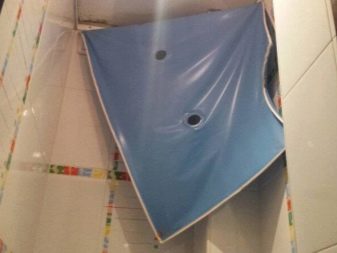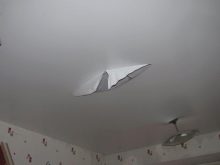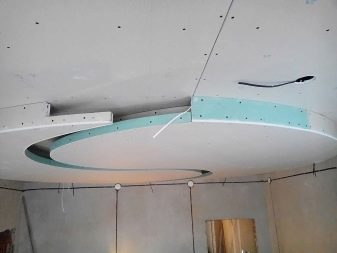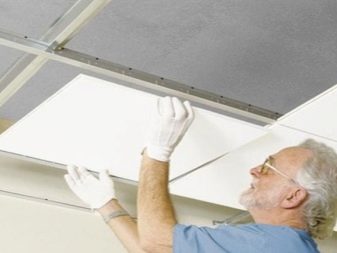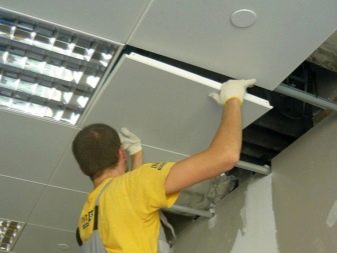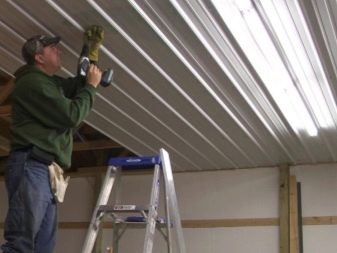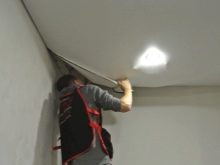How to dismantle the suspended ceiling?
Every year, suspended ceilings are becoming increasingly popular and in demand. Indoors, they look perfectly smooth, sleek and stylish additions to the interior. They have good wear resistance, it seems that they are eternal, because the ceilings do not require facelift. But it is not so.
Sooner or later there is a need to dismantle the ceiling covering in order to repair or replace. About the nuances of the dismantling of various types of suspended ceiling and will be discussed in our article.
Species
No matter how well and beautifully the repair was made, you need to understand that over time the suspended ceiling will need to be dismantled, wallpaper stripped, floor boards or laminate to be torn down. And the point is not that, for example, the neighbors are flooded from above and everything needs to be replaced, but that they want to update the interior, to make the situation more comfortable.As well as in any other business, extreme accuracy, attentiveness and care is necessary here. It will be easier to deal with dismantling for those who installed the suspended ceiling themselves, the rest is more difficult.
Before proceeding with the repair work, consider the types of coatings. They differ significantly, depending on the materials used and methods of fastening. Therefore, the rules for disassembling suspended ceilings will vary.
Stretch ceilings are divided into two types:
- PVC stretch ceilings have a low cost. Maintain water pressure up to 100 l / m2. The elasticity of this type of ceiling can decrease when heated and recover when cooled. The covering is easily mounted, seams can be made almost imperceptible.
- Fabric seamless stretch ceilingsmade of synthetic material impregnated with a specific composition to increase the density and resistance to mechanical damage. Their impregnation is completely safe for humans. In comparison with PVC ceilings, they have a significant advantage: they “breathe” and the mold does not start in them. These ceilings are not afraid of negative temperatures, they are easy to install yourself.
Cost more than PVC ceilings.
Among other options for suspended ceilings can be identified:
- Plasterboard ceilings. The composition of the material from which they are made includes cardboard and plaster. Dignity of the coating: drywall can be given any shape, taking into account the characteristics of a particular room.
- Slab ceilings. This ceiling is laconic and straightforward, so it is often used in non-residential premises. Advantages: low cost, functionality, ease of installation. But there is also a big minus - fragility.
- Cassette type ceilings have the form of cassette modules. Advantages: strong, durable, do not require special care. Minus: high cost.
- Aluminum slatted ceilings consist of long rails. Advantages: durable to use, breathable. These panels are lightweight, so do not require for mounting heavy structures.
- PVC ceiling or batten lining. Plastic is used mainly for their manufacture; they are light and durable.
Required tools
To make the workflow as high-quality and efficient as possible, it is necessary to prepare in advance a set of tools and aids that may be needed when dismantling the ceiling:
- wrench;
- usual plaster spatula;
- screwdriver;
- lineman's knife;
- screwdriver;
- pliers with long sponges;
- antistepler (in case brackets were used for fixing the baseboard);
- stairs;
- in some cases, a heat gun and special clothespins for hanging the film.
Dismantling the ceiling
It is necessary to carry out all works on removal of a covering in protective gloves not to be wounded. Indoors, you must remove all unnecessary in advance: furniture, carpets, curtains.
Flooring is better to cover with polyethylene to protect it from damage and dust.
Tensioner
Dismantling PVC stretch ceiling can be divided into two types: bezgarpunny and harpoon.
It all depends on the mounting used:
- Whichever method is used, dismantling should be started with heating the web to 50 ° C in order to reduce the elasticity of the stretch ceiling. If you do not use a professional heat gun, then the entire canvas will be damaged.
- With the harpoon installation method, you should always start from the corners.In the presence of decorative elements, they need to be removed. Very gently bend the profile with aluminum and at the same time weaken the canvas and the wedge. Gently hooking the harpoon with pliers, pull the canvas.
- The work is carried out in fabric gloves in order not to stain the canvas with your fingers. Carefully remove it, always moving from the corner to the center.
- If a non-gunpun method of installation was used, then work is carried out as described above. With one caveat: an aluminum profile is bent with a spatula or a special screwdriver with a curved end.
- During the entire dismantling process, you need to constantly warm up the canvas with a heat gun.
It is not allowed to direct the heat flux to the film very closely, since everything can be melted down or deformed.
Sometimes force majeure occurs. For example, the neighbors flooded the top or after the downpour leaked the roof. All this leads to spontaneous ruptures and sagging, the appearance of mold, yellow spots on the ceiling.
In these cases, before disassembling the stretch ceiling, it is necessary to drain the water:
- De-energize the entire private house or apartment from electricity.
- Try to carefully remove the lamp or chandelier.Pour water through this hole. We do this with the help of another person. One, standing on a stepladder, directs a stream of water from the film, and the second at this time substitutes a container for it.
- We leave the film to dry for several days, constantly airing the room. It will lead her a little, folds will appear. But when the installation continues, they will straighten.
- For quick drying of the film, you must also remove the ceiling lights and chandeliers, this will prevent moisture from stagnating.
Some other troubles can happen to stretch ceilings:
- When spontaneous ruptures of the stretch ceiling (rarely happens, coatings have good strength), you should carefully sew up the hole, glue the fabric tape, paint over the damage site.
- Sagging occurs when the installation is of poor quality, and you will need to perform a professional waist again. If there are small cracks, then you can seal them with a special tape and paint over to match the coating.
- If yellow spots and molds appear, the canvas is damaged and cannot be restored. It is necessary to dismantle the ceiling and install a new one. But before that, carefully treat all with antiseptic.
From plasterboard
- If there is a ceiling plinth, then the work must begin with its dismantling. The screwdriver needs to open all fastening systems and remove the plinth.
- Remove all the chandeliers and spotlights, before it de-energizes the room from electricity. Insulate all exposed wires.
- Then you can begin to dismantle the plasterboard ceiling. First, we remove the serpyanka - the grid, which helps to smooth the joints between the sheets of drywall. Gently with a screwdriver unscrew the screws that attach the drywall to the metal structure. Remove all sheets of drywall. Fully remove soundproof mats, if any.
- Without haste, unscrew the screws from the suspended metal structure and disassemble it.
Slab
- The dismantling process takes little time, but there is a lot of dust and dirt from it. It is necessary to clean all the furniture, carpeting in the room, lay the floor with cellophane.
- Having picked up each tile with a spatula, it is easy to remove the coating.
Cassette
- The dismantling process is very fast. With the help of special suction cups remove cassettes.
- We disassemble the suspended metal structure, twisting the screws with a screwdriver.
Rack
Properly performed work is a guarantee that all elements of the rack covering can be further exploited.
This is very important when you have to repair communications that are under the ceiling or replace several rails:
- We de-energize the entire room from electricity.
- Carefully remove the lights.
- Remove the plinth. If we can save the details of the rack ceiling, then it won't work like that with the plinth. Use a sharp knife to carefully hook the edges and tear them off from the surface.
- We begin to disassemble the slats from the extreme. All of them are fastened with special locks, they are hooked by a screwdriver. We do everything carefully so that the panels at the end of the work remain intact.
- At the same time we proceed to the dismantling of the tire stringers attached to the panels. They are easy to dismantle: unclip the clamps and disconnect.
- In the corners of the ceiling are profiles that are removed with a screwdriver. Twisting the dowel with a drill.
- Elements of the ceiling of the ceiling are easy to bend, so when removing them carefully fold them.
- All of the above actions are done if you need a complete dismantling of the slatted ceiling.
When replacing multiple rails, you only need to remove them.
PVC
- Glued plinth remove, podkovyrivaya knife.
- Extract the inserted elements.
- We remove all plastic sheets, podkovyrivaya them at the junction with a wide screwdriver.
- We disassemble the tires, loosening the clips of the springs, disconnect the stringer and the vertical suspension.
- We remove the suspension and wall corners, unscrewing all the bolts or dowels with a screwdriver, depending on the method of fastening.
Now everyone will be able to remove the suspended ceilings with their own hands, the main thing is to strictly follow the instructions provided for dismantling. In this work, you need to be careful, to do each step carefully, not to rush. Then the dismantling does not take much time, and the result will surely please you.
On how to carry out the dismantling of the stretch ceiling with your own hands, see the following video.

